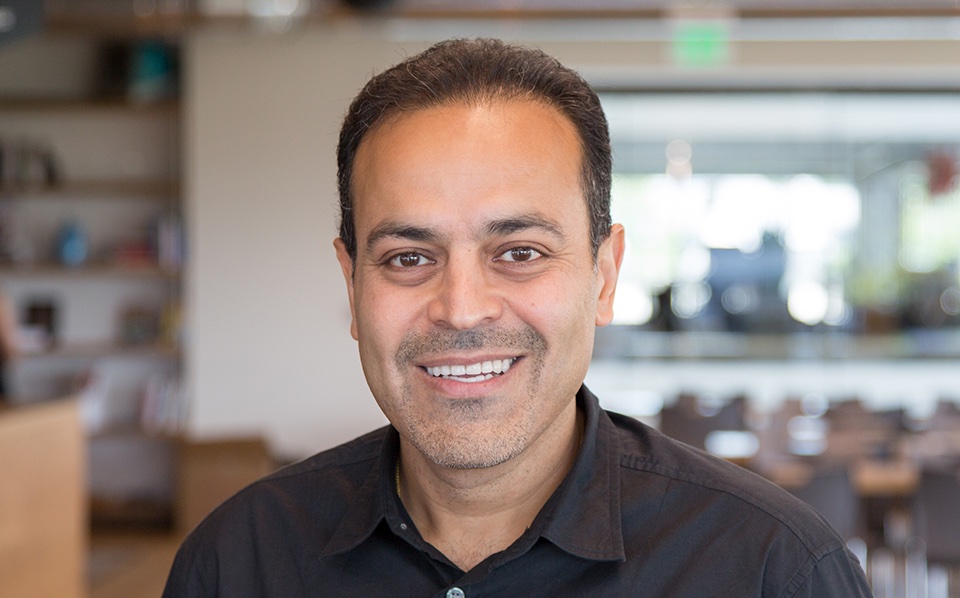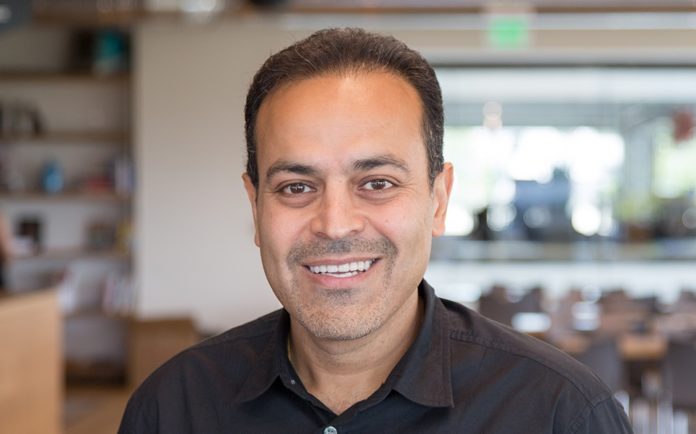Commvault is an old school enterprise data protection business re-inventing itself in a hurry.
I came to this conclusion after meeting CEO Sanjay Mirchandani last week at the Commvault GO conference in Denver. With my usual flair for putting people at ease, I kicked off the interview by asking him if he was a knee replacement, heart transplant or growth for Commvault. “Growth hormone,” he replied.
Let’s see why Commvault could do with a growth injection.

Commvault’s traditional business market has been assaulted on all fronts. By appliances; by Veeam offering simpler and faster virtual server backup; by the public cloud offering cheaper storage; secondary data management startups like Cohesity; and by a potential killer – SaaS-based data protection as a service.
The company remains at the top of Gartner’s backup and recovery Magic Quadrant but revenue growth since 2014 has been anaemic. Currently it is a $160m to $180m revenue per quarter company – a $600m – $700m run rate business. Faster-moving competitors like Veeam have surged up to a billion dollar run rate and beyond. Also Commvault typically makes small losses per quarter or low single digit net profits.
This has aroused the interest of activist investor Elliott Management, which took a 10 per cent stake in Commvault in 2018 and pressed for changes. The upshot was the resignation last year of previous CEO Bob Hammer and restructuring.
Now Mirchandani, who joined the company from Puppet Labs where he was also CEO, is accelerating and widening the reforms instigated by Hammer.
He is nine months into the job of rejuvenating Commvault and has already experienced a couple of tricky quarters with revenue misses. The first was part way through when he arrived, but the second one happened on his watch, and the effect was to galvanise his change agenda.
“The number one priority is top line growth,” Mirchandani told me: “It absolutely should be a billion dollar company.”
The route is via unifying data and storage management across on-premises IT and public clouds. Hedvig’s DSP, running in both environments will provide unified storage and Commvault can provide the unified data management.
The moves Commvault are making include:
- Boosting hyperscale appliances launched in 2017
- Simplified product offering
- Metallic SaaS announced last week
- Buying Hedvig in September 2019 with aim of unifying storage and data management
- Reorganising the sales team
- Strengthening sub brands with venture idea, as in Hedvig, a Commvault venture
Growing outside the backup reservation
Commvault is trying to expand beyond data protection and into data management and primary storage. That means taking on the primary storage systems suppliers such as Dell EMC, Hitachi Vantara and HPE, IBM, NetApp and Pure Storage plus upstarts including Excelero, Kaminario, and Pavilion.
In doing this Commvault is trying to do something no backup supplier has ever done successfully, with the exception of Veritas, but as that company has been offloaded by Symantec to private equity and struggling I think we can discount it.
Primary storage supplier collision
Commvault is not making a full-frontal assault on primary storage now. The company forecasts a collision with primary storage vendors, based on future enterprise IT containerisation under a unified data and storage management umbrella. Hedvig and its Distributed Storage Platform is the path to this unified world.
The collision with primary storage will happen because Commvault’s enterprise data protection market is growing too slowly. However there is a growth opportunity in the small and medium enterprise market, where Commvault has been less successful to date. The company’s new Metallic SaaS is pitched at this market as a CAPEX-saving data protection service that removes the need for on-premises backup servers and dedupe-to-disk target appliances.
Companies risk data fragmentation as they adopt hybrid on-premises and public cloud IT models. This is because their data will reside on separate on-premises and public cloud data protection silos. Commvault thinks it has the remedy.
A data management software layer will bridge these silos, to glue fragmented data back together and provide a unified data management sphere across them. That’s the first step. Containerised applications will move between public clouds and the on-premises world, and data will have to move with them, in a universal data plane.
The crux is that primary storage and secondary storage become use cases for data rather than separate silos. Data flows from a primary to a secondary storage state as business needs dictate. For example, primary data will be needed for, and generated by, transactions. It will be created by and flood in from sensors.
Then it will be protected, used for analysis or DevOps, needed for compliance, and saved for reference in archives. Data flows between the states will be easier when overseen by single storage utility or management system.
Unified storage and data management
The unified data management layer will need a unified storage layer underneath that supports block, file and object storage protocols. These are seen as different ways to access data at different stages in its lifecycle. Hedvig’s Distributed Storage Platform is that unified storage layer in Commvault’s scheme. And it provides both primary and secondary storage capability. “I feel the Hedvig bet is reasonably risk-free,” and Mirchandani told us. Let’s see.
As enterprises realise in the next few years that they need unified data management and storage management software covering primary and secondary storage applications, Commvault will be ready. It will be able to supply them with that software, and be a primary as well as a secondary storage supplier.








